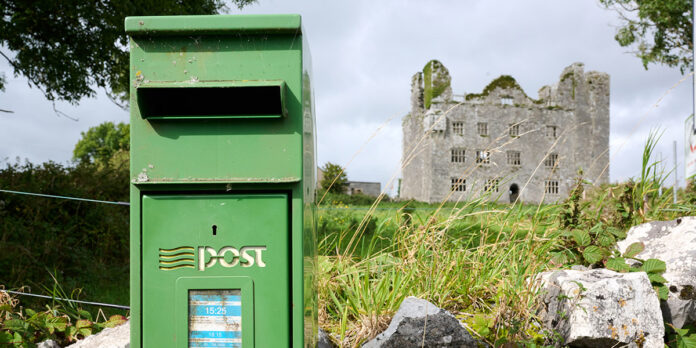One of North Clare’s most famous, or perhaps infamous, women will feature in a new book of ghost stories soon to be published by Irish author, Kieran Fanning.
The book, which is entitled ‘Haunted Ireland: An Atlas of Ghost Stories from Every County’, features one story from each of the 32 counties in Ireland, including the story of Clare’s Máire Rua.
“There is a notion that almost every castle in Ireland is haunted but often times there isn’t a story behind that but Leamaneh Castle does have a serious story behind it,” said Kieran.
That is the story of Mary McMahon who was nicknamed Máire Rua or Red Mary. Some say she got that nickname because of her temper or her red hair.
“She was married to Daniel Niland who died, and some say that he died under mysterious circumstances. She inherited his wealth and after that she married Conor O’Brien and she built Leamaneh Castle.
“That was during Cromwellians time and when Conor was away fighting the English, she would stay home in the castle. It was said that she ruled the castle with a rod of iron. There were stories that she hung unruly servants from the castle battlements by their hair.
“Local mothers would use the name of Máire Rua to threaten their children. There is one story, I don’t know how true it is, of one mother who brought her cheeky son down to Máire and left him there for a week.
“The mother left the child with Máire and after a week she came back and Máire said she had not heard a word from the son all week.
“She pointed the mother to the top of the castle where seemingly the son was hanging from the end of a rope.
“I am not sure how true these stories are but she certainly had a reputation for being cruel and hot-headed.”
A real historical figure, Máire Rua was a powerful woman in a time when Ireland was enduring the conquest and barbarity of the Cromwellian conquest.
“Conor O’Brien was killed in battle and according to the English law at the time, if the English killed you in battle, they could take the deeds to your land if your wife was unmarried. The only thing that Máire could do was to marry quickly. So apparently on the same day that he died, she rode off and found General Ireton, who was the commander of the army who had killed him,” said Mr Fanning.
“She explained that she was the widow of Conor O’Brien but Ireton didn’t believe her. She said that she would prove it to him by marrying one of his soldiers. So Ireton brough a soldier called John Cooper out and Máire married him on the spot.
“Later that day she questioned Cooper as to who had killed her husband Conor, and when she found out she send her men out and had the man strung up outside the castle, which probably frightened the living daylights out of her new husband.
“John himself was found dead very soon after. There are three versions of how he died with some saying he was thrown off the battlements, some said he was killed by a kick to the stomach and some say his throat was slit while he was shaving.
“It was certainly becoming clear that marrying Máire Rua was bad for your health. Seemingly she had up to 25 husbands. One of the stories told about her is that she trained a black stallion to ride to the edge of the Cliffs of Moher and the stallion would stop really quickly and fling his rider over the edge.
“Many of the locals didn’t like her and didn’t trust her. The story goes that a group of local men captured her. They apparently tied her up and left her inside a hollowed out tree to die and that was the end of Máire Rua. She died screaming and cursing her tormentors.”
The story of Máire Rua is just one of the many stories told in this atlas of ghostly tales.
“It started off as a book of ghost stories and when I went looking around for stories, I discovered loads of them. There were hundreds of them from every county so I came up with the idea of focusing on one ghost story from every single county,” said Kieran.
“Some counties had more stories than others. In the west in particular there were any amount of ghost stories to choose from. There were loads in places like Clare and Cork but I did struggle a bit in the eastern counties.
“I’m not sure what that is but maybe the old traditional storytelling survived longer in the west than it did in the more colonised east.”
Andrew Hamilton is a journalist, investigative reporter and podcaster who has been working in the media in Ireland for the past 20 years. His areas of special interest include the environment, mental health and politics.


